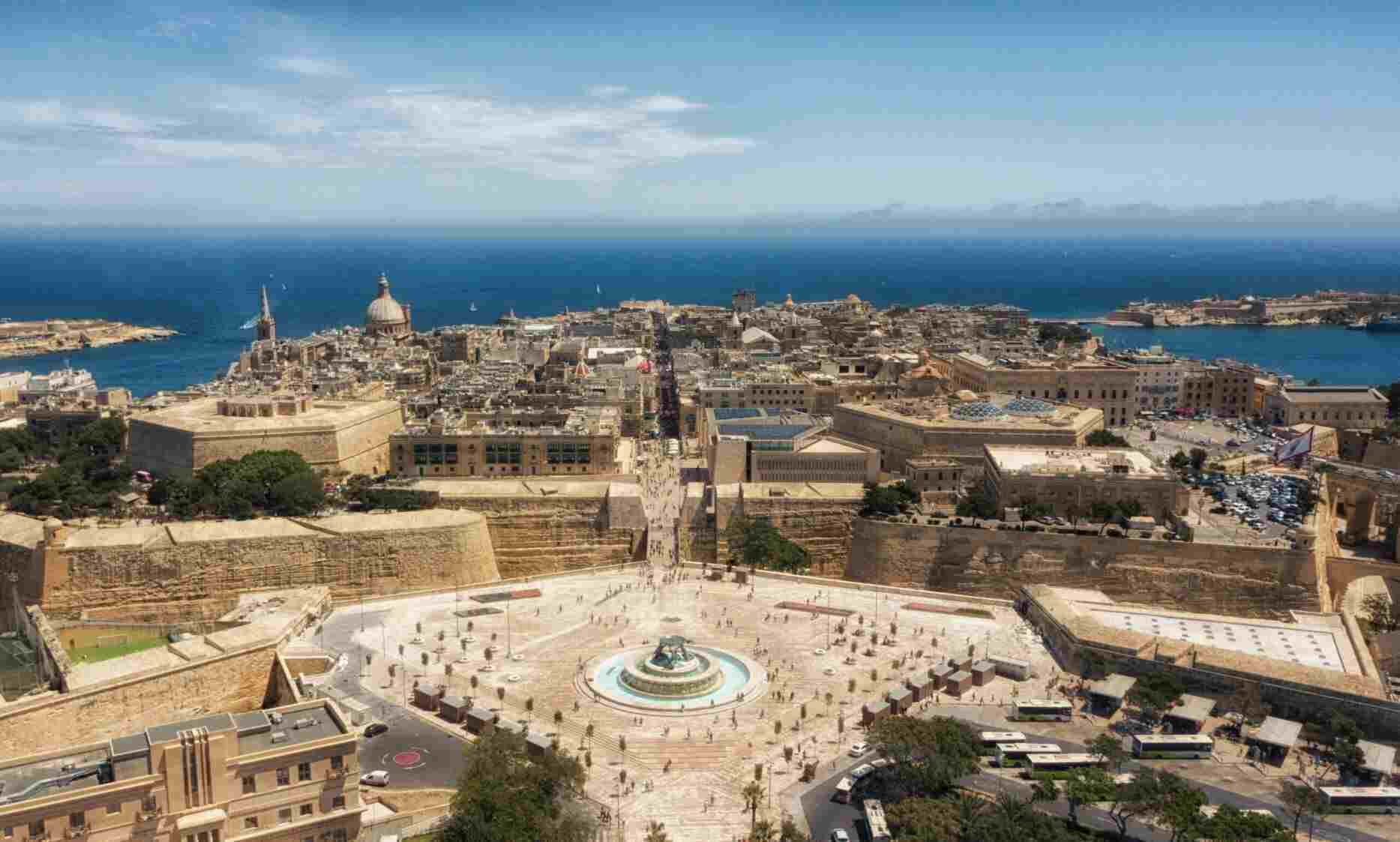
Overcrowding in Popular Destinations Maltas MHRA demand Strategic Tourism Management
Last changed: July 27 2024 13:09 by PCLMedia
The Malta Hotels and Restaurants Association (MHRA) has recognized the tourism surge over the past decade as a significant boon to Malta's economy, providing considerable revenue and creating numerous job opportunities. However, this rapid growth has also led to overcrowding in popular destinations across Malta and Gozo, coupled with a rise in antisocial behavior.
In 2022, the MHRA presented Deloitte’s Carrying Capacity Study, which emphasized that an unchecked influx of tourists, projected at an unsustainable 4.7 million to accommodate the current hotel pipeline, could severely strain the country’s infrastructure, damage natural and cultural sites, and frustrate both residents and visitors. Despite these warnings, the government has yet to take action. Last year, MHRA proposed several measures to promote sustainable tourism through policy and enforcement, but they have received no response.
Tony Zahra, President of MHRA, stated, “These challenges won’t be resolved on their own. It’s crucial for tourism stakeholders to collaborate on managing current and future visitor flows by emphasizing return on investment as individual enterprises and as a destination as a whole.”
MHRA has urged the government to prioritize investments in maintaining and enhancing public spaces. Critical issues such as unclean streets, polluted seas, power outages, uncontrolled traffic, and delays in infrastructure projects demand immediate attention. Implementing a zero-tolerance policy towards pollution and antisocial behavior is essential to safeguard Malta's reputation. Moreover, maintaining a balance between accessibility and preserving Malta's heritage is crucial.
The government must also focus on developing a tourism-ready workforce and avoid impulsive responses to the influx of third-country nationals. It is important to attract foreign workers who align with Malta's productivity and economic goals while emphasizing its Mediterranean identity.
Addressing unlicensed accommodations and enforcing health, safety, and taxation standards is vital for creating a level playing field and a competitive tourism sector. The government must align inter-ministerial policies, halt incentives for additional hotel development, and review protocols for managing rented accommodations and licensing catering establishments. While data analytics plays a role, political will is most critical.
The MHRA calls for decisive government action to elevate tourism standards. Although progress has been made, further improvements are necessary. Collaboration is key to managing the success of the tourism sector; otherwise, there will be costly repercussions for both the sector and the country as a whole.
The Impact of Tourism in Malta
Malta’s tourism industry is a cornerstone of its economy, contributing over 27% of the country's GDP. With its rich cultural history, stunning Mediterranean landscapes, and vibrant nightlife, Malta attracts millions of tourists each year. However, this influx has raised concerns about sustainability. Overcrowding has led to wear and tear on historical sites, pressure on local infrastructure, and a decline in residents' quality of life. Additionally, environmental challenges such as pollution and water scarcity have intensified.
Sustainable Tourism Initiatives
To address these challenges, sustainable tourism initiatives are crucial. The focus is on reducing the carbon footprint of tourism, promoting eco-friendly accommodations, and encouraging tourists to engage in responsible behavior. Initiatives like the Blue Flag program, which recognizes beaches and marinas that meet high environmental and quality standards, are steps in the right direction.
Balancing Growth and Preservation
The key to Malta’s tourism future lies in balancing growth with the preservation of its natural and cultural resources. By prioritizing quality over quantity and fostering a tourism model that benefits both visitors and locals, Malta can ensure the long-term sustainability of its tourism industry.
In conclusion, the MHRA’s call for action highlights the urgent need for strategic planning and collaboration among stakeholders to address the challenges facing Malta’s tourism sector. Only through collective efforts can Malta continue to thrive as a premier tourist destination while preserving its unique character and heritage.
Tourism can have a variety of impacts on local communities, both positive and negative. Here’s a detailed look at these impacts:
Positive Impacts
Economic Benefits
1. Job Creation:
- Tourism creates jobs in hotels, restaurants, transportation, and other service sectors.
- It can also lead to the development of new businesses, such as tour operators and souvenir shops.
2. Income Generation:
- Local businesses benefit from increased sales and profits due to tourist spending.
- Tourism can increase local and national tax revenues through taxes on services and goods purchased by tourists.
3. Infrastructure Development:
- To accommodate tourists, infrastructure such as roads, airports, and public facilities often receive upgrades, benefiting locals.
- Improved infrastructure can lead to better connectivity and services for residents.
4. Diversification of the Economy:
- Tourism can diversify local economies that may rely heavily on agriculture or manufacturing, making them more resilient to economic fluctuations.
Social and Cultural Benefits
1. Cultural Exchange:
- Tourism facilitates cultural exchange, allowing locals to share their traditions and heritage while learning about others.
- It can promote understanding and tolerance between different cultures.
2. Preservation of Heritage:
- Tourism can incentivize the preservation of historical sites, cultural practices, and traditions that might otherwise be neglected.
- Funds generated from tourism can be used for the restoration and maintenance of cultural sites.
3. Community Pride:
- Increased interest in local culture and traditions can instill a sense of pride among residents.
- Successful tourism can enhance the local community’s identity and cohesion.
Negative Impacts
Economic Drawbacks
1. Cost of Living:
- Increased demand for goods and services can lead to higher prices, making it more expensive for locals to live in tourist areas.
- Property prices and rent can rise significantly, potentially displacing residents.
2. Economic Dependence:
- Over-reliance on tourism can make local economies vulnerable to global events (e.g., pandemics, economic downturns) that impact travel.
- Seasonal fluctuations can lead to unstable income for those employed in the tourism sector.
3. Income Inequality:
- The benefits of tourism may not be evenly distributed, with profits often going to external investors rather than local communities.
Social and Cultural Drawbacks
1. Cultural Erosion:
- The influx of tourists can lead to the commercialization of local culture, diluting traditional customs and practices.
- Locals might alter cultural practices to cater to tourist expectations, leading to a loss of authenticity.
2. Social Tensions:
- Increased tourism can lead to overcrowding, causing frustration among residents who may feel that tourists infringe on their daily lives.
- Differences in behavior and values between tourists and locals can lead to conflicts and misunderstandings.
3. Strain on Resources:
- High tourist numbers can strain local resources such as water, energy, and public services.
- Environmental degradation can occur due to increased waste, pollution, and damage to natural areas.
Environmental Impacts
1. Environmental Degradation:
- Overcrowding at natural and cultural sites can lead to erosion, pollution, and destruction of habitats.
- Increased construction for tourism infrastructure can harm ecosystems and biodiversity.
2. Resource Depletion:
- Tourism can lead to the overconsumption of resources, such as water and energy, which may already be scarce for locals.
3. Waste Management Issues:
- An increase in tourists often leads to more waste production, which can overwhelm local waste management systems.
Conclusion
Tourism has the potential to bring significant benefits to local communities, but it also poses challenges that need careful management. By implementing sustainable tourism practices and involving local communities in tourism planning and decision-making, destinations can maximize the positive impacts while minimizing the negatives. Balancing the needs of tourists and locals is crucial for ensuring that tourism contributes to the long-term well-being and prosperity of local communities.
Contact IMEX Malta

